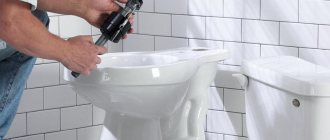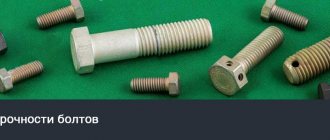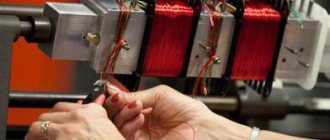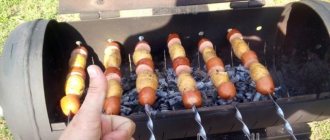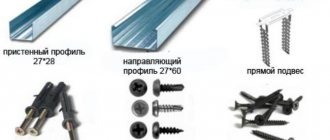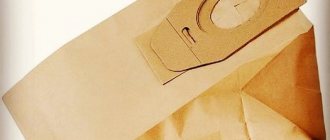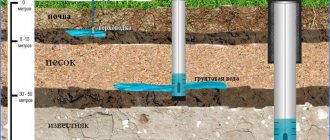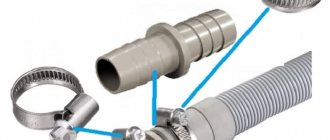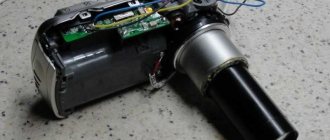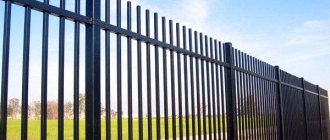Reasons for tearing off edges
The desire to quickly replace failed parts secured with a threaded connection is not always feasible.
Sometimes, when trying to unscrew a bolt from the unit body, the key begins to spin. This is due to the tearing of the edges on the head of the hardware when exposed to increased load. And the reason for this may be the following factors:
- sticking, which is caused by the diffusion of atoms during a long connection;
- displacement of the parts being connected relative to the axis of the holes, which leads to jamming of the screw;
- tugging during installation (increased load);
- using the wrong tool during assembly (for example, to tighten a bolt whose head size is 14 mm, a 17 mm wrench is used, and a screwdriver is inserted to eliminate the gap);
- corrosion that has eaten away the surface of the head.
How to unscrew a hex or sprocket head bolt
In the automotive industry and other equipment, hex tool bolts are often used. How to turn out a torn cap that has broken edges:
- Make a horizontal notch on the head with a grinder or file. In this case, a strong screwdriver is used to unscrew the broken screw.
- Using a special TORX sprocket, which is driven into the head. The nozzle is selected in size, slightly larger than the torn cap, for a strong connection between the walls.
- A set of extractors that can be purchased at a hardware store. Before using the extractor, a hole is drilled with a drill in the base of the bolt, then the extractor is inserted, and the screw is removed with pliers or a special clamp.
- Using a left-handed drill with a slightly smaller hole diameter. Work with the tool is carried out in reverse mode, with this method it is possible to damage the thread.
How to unscrew a bolt with torn edges manually
Broken nuts are more difficult to unscrew, since during work there is a possibility of damage to the threads. The simplest way is to use chemicals; the surfaces are cleaned and treated with the product for 15 minutes. If the edges are torn off, it is impossible to use a wrench or socket. In such cases, a chisel is used to destroy the main part of the nut, then removed and replaced with a new nut.
How to remove a bolt if the head has broken off
A broken head of the structure can cause a lot of trouble during work. How to act in such a difficult situation without resorting to using a serious tool. If the element is small, it is possible to make a notch with a grinder, the recess of which will allow the use of a screwdriver with sharp edges. To perform more complex work, you will need an extractor, drill and reamer. The base of the threaded connection is drilled exactly in the middle, after making the hole, the tool is screwed in counterclockwise.
https://youtube.com/watch?v=PoJ4X-xN2i4
When performing sequential actions, unscrewing a damaged structural element will not be difficult even for those who are encountering this problem for the first time. It is necessary to correctly assess the situation and use a good quality tool for a productive result.
How to drill out a broken bolt
A drill made of high-quality material is used for the work. The size must be selected in accordance with the torn edges; the diameter of the drill should not be larger than the hole. A high-quality drill has a higher price, but its use eliminates rapid wear and the possibility of breakage during operation.
You should use the tool slowly, and before completing the task, correctly assess the situation. It is necessary to monitor the position of the tool during operation; drilling is carried out strictly in the center, without deviations in different directions.
Flush break
This type of failure is considered the most difficult to repair, since it is very difficult to determine the diameter of the hole, especially when cutting fasteners. Therefore, in order to drill out a broken bolt of a certain type, it is necessary to clean the surface. This will allow us to determine the gaps we need.
The following unpleasant situation often occurs: the breakage site has curved shapes that are very difficult to process and straighten. And it is categorically not recommended to drill a product in such a state, because there is a risk of completely ruining the structure. Therefore, you first need to use a core, which is used to prepare a place in the center of the drill.
The further procedure for drilling out a bolt that has broken in one way or another is similar to the option for a surface break. After creating the hole, the remaining threads are removed using a hook.
Break on the surface
Usually this is the simplest type of breakdown and can be fixed without radical measures, which can sometimes harm your car or other unit. However, before unscrewing the broken bolt, you need to treat the breakage area with kerosene. This will help eliminate waste and reduce surface contact. Next you need to follow the following recommendations:
- If the protrusion is large enough, it is best to use simple tools such as clamps, pliers or pliers. With their help, it is easy to grab and turn the part along the thread without applying much effort;
- Some craftsmen, when answering the question of how to unscrew a broken bolt, advise using a welding unit. It will allow you to weld a lever to the hardware, which will help you unscrew or unscrew the connection by creating a rotational movement with the required pressure;
- There is also an option in which you can use a drill with a diameter slightly smaller than the bolt itself. A hole is made in the center of the bolt axis to the full depth. Then the remaining fasteners are removed using a hook, unscrewing the thread from the very bottom.
Methods for unscrewing bolts, screws, screws with licked edges
If the usual method fails to unscrew the fasteners whose edges have licked off, you can use one of several proven options.
Gas key
This method is used when unscrewing bolts, since they have a protruding head that you can grab onto. For this:
- Clean the bolt head.
- Lubricate the joint with kerosene or diesel fuel, a liquid like WD-40 works well, and leave for 15–20 minutes.
- Unscrew the bolt. They do this with a gas wrench. With its help, a lot of force is created and it is possible to grip even a round head well.
The disadvantage of this method is that it is not always possible to get a gas wrench to the desired bolt.
Cutting new edges
If the bolt is large, then using a grinder you can cut new edges on it. It is enough to make only 4 of them and use a smaller key to unscrew the bolt. You can cut new edges on a bolt with a file, but this is more difficult and takes longer. You can make a cut on the head of a screw or screw using a hacksaw or grinder.
You can make a deeper cut on the head of a screw or screw for a screwdriver.
Hammer and chisel or impact screwdriver
This option is more suitable for licked nuts or fairly large screws. The chisel is pressed against the head of the fastening element and, hitting it with a hammer, the screw or nut is gradually turned. Small screws or screws can be removed using an impact driver and a hammer. After loosening the fastening, the work is done with a regular screwdriver.
An impact screwdriver can be used to unscrew small screws or screws with licked slots.
Band or piece of rubber
In this case, use a small part of a medical tourniquet or a piece of thick rubber. The selected material is placed on top of the head of the screw or screw, after which it is pressed with a screwdriver and gradually turned. The presence of rubber will help increase friction and solve the problem.
The harness is placed between the screwdriver and the head of the screw or screw.
Extractor
An extractor is a special tool that is used to unscrew screws, bolts or screws with licked or broken heads.
Extractor - a tool for unscrewing screws, bolts or screws with licked or broken heads
The order of its application:
- Using a thin drill, a small hole is made in the head. In some cases, the extractor can simply be driven into the licked screw slot.
- Select an extractor of the required diameter. Drive or screw it into the prepared hole. This depends on whether a regular or screw tool is used.
- Unscrew the bolt.
Video: unscrewing a licked screw using an extractor
Regular or left hand drill
Left-handed drills with counterclockwise rotation are available for sale. They improve tool centering and reduce the load on the drill, which gives higher productivity and drilling accuracy. By inserting such a tool into a drill, you can unscrew a screw or screw with a licked head. If you don’t have a left-handed drill, you can try to drill out the stuck fasteners using a regular one. In this case, you need to take a drill whose diameter is smaller than the diameter of the bolt or screw
You must act carefully so that you do not have to cut threads for new fasteners later.
The drill bit should have a diameter smaller than that of the problem bolt
Glue
A nut of the appropriate diameter is fixed to the head of the problematic screw or screw using epoxy glue or glue called “cold welding”. After the glue secures it securely, use a wrench to turn the nut and unscrew the screw or screw together with it.
Using glue, fix the nut to the licked head, and then unscrew the screw together with it.
Welding
If you have a welding machine nearby, you can fix a new nut on the head of a bolt or screw by welding it. After this you can immediately unscrew it.
A new nut can be welded to a problematic bolt or screw.
Solder and soldering iron
If you need to unscrew a small screw or cog, use a soldering iron and solder:
- Heated solder is dripped onto the head of the fastener with licked edges.
- While the tin has not hardened, insert a screwdriver into it and wait a few minutes.
- Unscrew the problematic screw and clean the solder tip of the screwdriver.
How and how to unscrew a broken bolt: the best ways
The choice of a specific method depends on the situation, but in practice, the fastening element we are considering most often turns out to be simply licked off (due to poor quality of workmanship). You can remove it without damaging the thread: to do this, just carefully sharpen the head so that its shape matches the size of the key. Well, if you want to minimize risks, you should additionally saturate the joint with lubricant - it will reduce the resistance to pulling.
Now let's pay attention to what to arm yourself with in the event of some kind of damage - due to rust, excessive pressure or for other reasons.
Flat head screwdriver and hammer
This is how to unscrew a broken bolt when the break occurs above the thread surface and the edge of the resulting surface is uneven. Here you need:
- Clean the contact area, examine it carefully and find the largest protrusion.
- Place the tool at the selected point, placing it at an angle; It is quite acceptable to deepen the uneven area with a core so that you can rest even more reliably.
- Try to turn the hardware using light blows; If it doesn’t work, increase the force of influence a little at a time until it works.
Of course, this method should be implemented with extreme caution so as not to accidentally damage adjacent elements or make the hole too deep.
Unscrew with a chisel
Another option for how to unscrew and remove the crook of a bolt. It is carried out using the same technology as the previous one: they cleared the place, found a point of emphasis, and began to turn. Moreover, the remainder should be unscrewed quite easily and quickly, because the contact area of the tool in this case is larger than in the past.
Excellent for removing hardware with the top flying off.
Core and hammer
A suitable choice when the head has been torn off or if a defect is discovered at the very beginning of the thread, and there is no screwdriver at hand. Look, the tip of the marking tool is sharp and therefore excellent for deforming the cut. A few light blows, and the surface is no longer flat; you can grab onto it with pliers and pull out the stuck body.
Weld the nut by welding
Let's imagine that the head of a bolt is broken: how to unscrew the remaining part?
An original but effective solution is to attach something to it that you can pull on. A hollow fastener with a similar thread is an ideal option, but how to fix it? Using heat treatment with plastic deformation! To solve this, in addition to the element already mentioned, you need to take more wire cutters, and also connect a welding machine and:
- Take the nut with a holder and lean it against the fragment with a slight offset.
- Connect the body to the part using an arc.
Now it will not be difficult to remove the failed hardware and replace it.
Also, as an alternative, you can weld the pin - at an angle, and small. It will perfectly serve as a lever that can be pulled to remove the body.
When deciding how to get a bolt out if it has broken off, many people prefer welding - because it has at least 3 advantages:
- You can start unscrewing almost without delay, since the same nut heats up strongly and quickly; and this does not harm the body of the part, because it continues to remain cold. Also, due to thermal expansion, decoking of the stuck contact is observed.
- Using this method, it will not be difficult to remove even fragments of hardened hardware made of high-strength steel, drilling which is very time-consuming, difficult and impractical.
- A strong seam is created between the body and the lever (consumable), which allows you to pull out the worn element with pliers even with force.
Welding is also a convenient answer to the question of how to remove a broken bolt from a thread, because it allows you to unscrew any remaining hardware - protruding from the body, running flush, and even deeply recessed. In the first and second cases, you can attach a washer with a nut or a lever and pull, in the third - insert a metal tube and build it up - there are options, and each of them is quite simple to implement.
Unscrew the pin using an extractor
This is a specialized tool, and it is effective where available tools fail.
Previously, it was wedge-shaped (a cone with special edges) or rod-shaped, and both of these options were driven into holes. Its screw model, with a cut spiral, has also gained popularity. Today it is a whole set of devices, which includes bushings, drills and metal strips. So, you have a kink in the bolt, how to unscrew it using this device:
- Fill the contact area with lubricant or, if the connection is old and stuck, with a rust solvent.
- Make a hole (the same diameter as the damaged fastener), using one of the supplied tubes as a guide.
- Drive the rod to the wedging depth.
- Remove the tool element along with the remains of the body using a wrench.
After this, you just need to place the worn hardware on a hard surface and lightly hit it several times to loosen the contact force and remove it from the working part of the tool.
The method of how to unscrew a crimp with an extractor may differ slightly depending on where exactly the fastener managed to break off:
- Above/below the engine housing (or other functional unit) - you need to install a guide, drill a hole, hammer a rod into it, and remove the damaged element.
- Flush with the surface - you should also use a punch for centering; and when you mark the point for the location of the sleeve, all that remains is to repeat the above operations.
Universal sets are good because they can be used to remove not only hardware, but also screws and even thin studs. They are quite affordable in price, and when purchasing, it is better to give preference to extractors made of hardened or chrome vanadium steel - they are stronger.
Drill out the body
This is one of the most labor-intensive ways to remove a broken bolt from a thread, and it is worth using it in practice only when there are no other options. And not only because it takes time, it is important to maintain the accuracy of the work. The slightest mistake and the internal coils of the case will be damaged. In addition, to implement the method you will need a whole set of tools:
- Metal drill with a set of attachments.
- Screwdrivers with different blades.
- Triangular file
- Reliable pliers or, better yet, a wrench.
- Tap.
- Several needle files of various shapes and sizes.
WD-40 will also be useful: we remind you that it is worth pouring it into the work area 15 minutes before performing operations, it will dissolve some of the rust.
So, the bolt has broken off, how to unscrew it using drilling:
- Put on the thinnest attachment, turn on the drill and make a recess exactly in the center of the hardware; try not to go aside, this is fraught with subsequent difficulties.
- Change drills, gradually increasing their cross-section, until the hole occupies 1/3 of the diameter of the body.
- Drive the file in, carefully but firmly, because if it does not hold well, you will not be able to remove the damaged element.
- Take pliers or a gas wrench, clamp the trihedron with them and begin to make circular movements, trying to pull out the fasteners.
It should work, but how to unscrew and remove, how to unscrew a broken bolt if it does not give in even after all these steps? It is necessary to widen the hole so that another hardware fits into it, but smaller and with the opposite thread (usually the left one). In this case, the second one will act as a cap after it is screwed into the first one.
If this doesn’t work, just continue to increase the diameter and length of the recess until the pressure on the remaining fastening element weakens, then they will begin to wobble and it will not be difficult to remove them using a suitable tap.
We remind you that this is a solution for extreme cases; in general, there are simpler, faster, more convenient options.
Drilling
One of the methods that allows you to remove rusty and welded bolts, destroying them completely. It is used in cases where a bolt is turned. This method is especially convenient if during operation of the mechanism the edges of the head were damaged (licked off).
After selecting a drill, it is necessary to eliminate the effect of the drill moving to the side during the drilling process. To solve this problem, devices called conductors are used. Structurally, this is a plate with holes into which sleeves equal to the diameter of the drill are inserted. They do not allow the drill to go to the side during operation.
If fasteners of large diameter are drilled, two holes are drilled on the side of the center to a depth of ten millimeters. Insert metal pins (nails, studs of suitable diameter) and try to turn the old bolt.
If the thread gives in, the problem is solved. If not, you should drill the hole completely to the full depth or all the way through. Then remove any remaining metal.
How to unscrew a broken bolt using a drill with a left-hand spiral
In two stages:
- First you need to take a regular nozzle and center it.
- Then arm yourself with the one that rotates counterclockwise (let it be a little larger in diameter) and, using it, gradually remove the body.
You should be careful and control the direction of movement - then the edges of the working rod will catch the remaining hardware, pushing them upward, but without destroying the thread. If any damage occurs, it will be so minor that you can easily fix it with a tap. This method is effective when the fastening joint is not yet very rusty or stuck.
Bolt failure below surface
Complex failure, especially for a soft metal part
Therefore, it is very important to unscrew the broken bolt without damaging the threads in the hole. The procedure here is as follows:
- The center of the hardware is outlined using a core. It is best to use a thin and durable metal tool; it will not damage the product;
- Then a tap with a reverse thread is purchased. Its diameter should be smaller compared to the diameter of the bolt;
- A not very deep hole is drilled for the tap;
- The tool is installed to cut the thread. It turns in a circle and then the element can be unscrewed.
https://youtube.com/watch?v=dC8kJmFPx-s
If the last point could not be achieved, then the tool can directly become a bolt. However, you should not make excessive efforts, as there is a possibility of breaking it. As a result, you can remove the old broken part and screw in new elements.
The best ways to remove bolts
Depending on the condition of the damaged connection, there are several ways to unscrew a broken bolt. Each of them will be discussed below. However, I would like to pay special attention to the question of how to unscrew a licked bolt, because in fact it is only deformed.
Sometimes the following situation occurs: the car was sent for repairs and, having done everything necessary, was returned to the owner. The quality of the work was satisfactory and there were no complaints until the supplied part had to be replaced. However, when the need arises, upon closer examination, it turns out that the edges have lost their shape or the bolt is so overtightened that it is impossible to unscrew it without deforming the head. Therefore, many mechanics ask the question of how to remove a licked bolt.
The most accessible way is to sharpen and bring the shape of the head to the size of the wrench for the licked bolt. It is also possible to sharpen the hole for the screwdriver so that unscrewing occurs without deformation of the parts. To improve the result and reduce effort, you can pre-soak the joint with a solution to reduce resistance when unscrewing.
Using a drill
You can try to drill out the remaining bolt with a drill close in size to the size of the bolt. After drilling, remove the remaining bolt with a screwdriver.
It should be remembered that this type of drilling requires some skill so as not to damage the thread of the hole.
If the described instructions on how to properly unscrew a broken bolt did not help you, then you can use another method.
If the design of the part allows it, then you can drill the place of the broken bolt with a large drill, then cut a new thread of large diameter and tighten a suitable bolt.
If you do not have the ability to tighten a large bolt, then you will have to look in a store or find a mechanic or turner who will make you a bushing with a large outer diameter for a new hole. Will cut a smaller internal thread on the bushing that will fit your design.
On the Internet you can find various photos of broken bolts and advice from various professionals who describe the entire process of unscrewing a particular broken bolt.
This article describes the simplest options you can use to remove a broken bolt. But sometimes bolts or studs break in the most inappropriate places.
To fix this problem, you will most likely have to turn to certain specialists who, due to their professional activities, have a lot of ideas on how to unscrew a broken bolt from any of the most inaccessible places.
Why do bolts break?
The main reason for bolt failure is corrosion, which metal structures are inevitably subject to during operation (especially severe in humid and aggressive environments). Oxidation causes uneven wear of fasteners. Devices collapse at the most unexpected moments, unable to withstand the load.
Also, bolts often break for the following reasons.
- When tightening the hardware, too much force was applied to the key.
- The fasteners turned out to be defective (there were microcracks and other defects invisible to the eye).
- Strong sticking occurred. In this case, the bolt heads come off due to the large forces applied to unscrew them.
Characters of breakdowns
There are three cases. Let's look at the simplest ones first.
If the bolt is broken but part of it is sticking out of the threaded hole, you're in luck! In this case, the broken bolt can be easily unscrewed in two simple ways.
1. If the protruding part of the hardware is large, clamp it with pliers or an adjustable wrench. There shouldn't be any problems with unscrewing the bolt.
Photo No. 2: an option for breaking a bolt in which unscrewing it will be as quick and easy as possible
2. If a piece of hardware cannot be clamped due to its small size, proceed as follows.
- Make a cut along the diameter of the protruding part using a grinder.
- Unscrew the broken bolt with a screwdriver.
Photo No. 3: by the way, screws with damaged heads are also unscrewed in the same way
Let's move on to the most difficult case. Most often, bolts break flush with the surfaces or, even worse, at the depth of the holes.
Photo No. 4: the most difficult case of bolt failure
We will tell you below how to unscrew a broken bolt in such difficult cases.
How to prevent edges from being torn off
To prevent such a problem as torn edges of a bolt or splines of a screw or screw from taking you by surprise, you must adhere to simple rules:
- You need to buy only high-quality fasteners that have high strength and reliability;
- When tightening and unscrewing screws or screws, do not allow the screwdriver to slip through the slots. This leads to their abrasion and it will be difficult to unscrew such fasteners;
- You should always monitor the condition of the instrument. If a screwdriver or key has licked edges, then it will be difficult to unscrew a screw, bolt or screw with their help.
It is much easier to prevent the edges of bolts, screws and screws from licking off than to then unscrew damaged fasteners.
Do not panic if a problem appears such as a licked bolt head or slots on the head of a screw or screw. There are many ways to solve it. It is necessary to adequately assess the situation and choose one of the available options.
How to unscrew a broken bolt
If the grip area for a pipe wrench is insufficient, attempts to use the tool in this situation are practically useless. It is necessary to use a file to make edges on a torn product of a smaller diameter. After successful processing, a key or head of the required diameter is selected, and the torn element is smoothly unscrewed.
Unscrewing a broken bolt
Using a hammer together with a chisel can make the work easier; you need to make a notch and use the tool to unscrew it with precise blows. This method is considered effective, since the impact force is applied in the desired direction. Once it can be visually determined that the process has moved, a suitable spanner or socket can be used.
If you have a welding machine at hand, you need to weld the nut onto the head, then with a sharp movement you can unscrew the torn part. In cases where it is not possible to weld the nut due to lack of space, a piece of metal is welded on for further processing of the edges.
Experienced craftsmen will tell you how to unscrew a connection element with torn edges; some simply start drilling without wasting time. An effective way is to remove the washer between the bolt and the clamping area. The hammer strikes the chisel mounted on the nut.
Preventative measures when screwing bolts into a part
In order not to encounter such problems, it is best to prevent them. This is not difficult to do and such work will not cause any special problems.
The universal composition of WD-40 is suitable for a variety of purposes, from lubrication to rust removal PHOTO: wallegro.ru
Before “tightening” the bolt, the hole must be generously lubricated with “WD-40” or diesel fuel. After some time, you need to screw the bolt in and out several times. All that remains is to lubricate its thread, after which you can stretch it.
Another good means of prevention is candle paraffin. They need to rub the threads of the bolt before screwing it in. It would be a good idea to warm up the hardware a little with a regular gas burner after fully broaching. The paraffin will melt and fill all the smallest voids. After these actions, corrosion simply has no chance.
It makes sense to keep a couple of candles in the garage - it is not known what they might be useful for PHOTO: anugrahjayabandung.blogspot.com
Should you use soap to lubricate threads?
The answer to this question is clear – absolutely not. The fact is that in the manufacture of both household and toilet soap, alkali is used. Its amount is negligible, but it is enough to initiate the process of metal oxidation. As a result, shells appear on the bolt, as well as on the part itself. They come together during the corrosion process, and after just six months it will no longer be possible to remove the hardware even with the help of an extractor. A similar process is popularly called sticking.
But you shouldn’t use soap to lubricate bolts when tightening them. PHOTO: bash.news
Unscrewing a broken bolt using another
This method is suitable if the diameter of the residues is relatively large.
Because you will have to drill a smaller threaded hole in the body, into which you will then install a fastener with a left notch and begin to tighten it, going deeper and deeper - it will push out the previously destroyed part. The only downside is that a drill is required to complete the task, but it is not always at hand, and you will have to spend one new hardware. Therefore, it makes sense to consider solutions that are easier to implement and universal in everyday life, and put this aside in reserve for the case when there is no other option.
Self-tapping screws with stripped splines (asterisk)
If overheated screws are unscrewed/twisted a couple of times, their edges lose their sharpness, the screwdriver turns, but the screw itself remains in place. If it “sits” in wood, plaster, chipboard or other similar, not too hard materials, you can put a thin elastic band (for example, for hair) under the screwdriver. Due to the elastic force, a tighter fit is achieved to the remaining edges, which helps to move the self-tapping screw from its place. Other methods are more “traumatic”:
- Cut grooves inside the “licked” funnel using a flat-head screwdriver and unscrew. This method is quite dangerous: if the walls of the “funnel” are too thin, there is a chance that the screw head will simply crumble from the effort. All that remains is a screw that cannot be unscrewed.
- Drill and unscrew using a small diameter extractor.
- Take a chisel and grind it to the size of the cap. Place it on the cap, hitting it well with a hammer a couple of times. A new cap is formed and, at the same time, existing rust may crumble (if the screw is stuck in the iron). Using the same chisel, try to move the stubborn screw from its place. To make the process easier, you can drop oil on wood or WD40 on metal.
- Drill out the material around the cap, take a tube with an internal diameter slightly larger than the diameter of the cap, and put it on the cap. Pour glue inside. When the glue hardens, unscrew the tube.
The remains of a bolt or stud without a head can be unscrewed as follows: cut a left-hand thread in the remaining body, drip “moment” glue, screw in the left-hand tap, and leave for an hour. Apply some oil to the main thread and leave for an hour. When the glue sets, unscrew it. If the remains of a self-tapping screw are stuck in the wood, it is easier to seal this hole and install another fastener nearby.
How to unscrew a bolt with broken edges?
It is very good if there is space around the problematic connection that allows you to use tools such as an adjustable wrench or pliers to unscrew it.
Bolt with torn edges for a screwdriver
If access to a bolt with torn edges is limited, then you can make a notch on the head of the bolt with a chisel or using a grinder. After this, you need to try to unscrew it with a screwdriver, and if it still does not give in, then place the screwdriver at an angle to the stuck bolt and hit it with a hammer, trying to create a rotational movement (counterclockwise).
A bolt having a protruding head for an internal hexagon or asterisk
This bolt can be unscrewed:
Using a flat-head screwdriver, having previously made a notch on the head of the bolt with a hacksaw or grinder (it is important to make the cut with absolutely vertical walls so that the screwdriver does not jump off during unscrewing); Using a TORX sprocket of a suitable size (selected so that the splines do not fit into the hole for the hexagon, but it is not too large). Such an asterisk should cut through the bolt head with slots, fitting tightly into the head itself
Then you should unscrew the bolt with a jerk to avoid breaking the sprocket spline. There is no need to use TORX sprockets for this manipulation, which have holes in the center, since they break off when driven in. Using a drill, a drill bit and a set of special extractors (sold in construction and auto stores). To do this, drill a hole strictly in the center of the bolt, carefully drive an extractor of a suitable size into it, and then use pliers to unscrew it along with the bolt. This will be easy to do, since the extractor has a thread cutting direction opposite to that of the bolt. Using a drill with reverse and a left-hand rotation drill, the diameter of which should be slightly smaller than the damaged bolt. First, make a small hole with an ordinary thin drill, and then put a left-hand rotation drill in the drill and turn the drill on in inverse rotation mode.
Bolt with a hexagon hole
This bolt can be unscrewed:
- Using a needle file to obtain the next hex size (in this case the bolt can even be reused);
- Using a TORX sprocket of a suitable size;
- Using a flat-head screwdriver, having previously made a notch on the bolt head with a hacksaw or grinder;
- Using an extractor that screws directly into the hexagon hole.
Steel connecting rod bolts
This bolt can be unscrewed:
- Using a suitable size extractor;
- Using electric welding. To do this, you need to insert and weld an unnecessary hexagon that matches the size of the bolt. It should be noted that this method is only suitable for bolts made of steel.
Effective ways to unscrew a broken bolt
There are several ways to unscrew a broken bolt, but before you begin, you should do some preparatory work.
Such work means: Cleaning the work site from dirt, oil, etc.
Treat the threaded connection with WD-40 or at least machine oil. Alternatively, you can hit the fragment a couple of times with a hammer or heat the bolt with a soldering iron or lamp, provided that this is possible and other important parts (rubber, plastic, fabric, etc.) will not be damaged by the heating.
How to unscrew a bolt if it breaks above the threaded surface
1. If you have already managed to “break” the threads of the bolt even a little, that is, if it has already begun to unscrew, you can try to unscrew the broken bolt using pliers or a good adjustable wrench.
2. The second option will require you to use a hacksaw or a grinder (depending on the size of the bolt); sometimes a chisel also helps, the main thing is not to overdo it. The principle is as follows: make a transverse hole for a screwdriver and try to unscrew the bolt with a screwdriver.
3. Option three - welding. As you understand, this method requires a welding machine, everything is done as follows - take a bolt with a head of approximately the same diameter and weld it to the fragment, then using a wrench, carefully without using excessive force, try to unscrew the broken bolt. Rumor has it that there are so-called “aggressive adhesives” that can supposedly perform the role of welding. However, this method has not been personally tested, so we will not claim its effectiveness.
How to unscrew a broken bolt if it breaks off flush with or below the surface
- In this situation, you will have to act more radically; you will need a drill with a thin drill and good skills in using this tool. You need to drill 2-3 or more thin holes in the body of the bolt in order to then combine them into one. You will need to install a screwdriver in this hole and unscrew the broken bolts.
- The second method is more complicated. If you cannot unscrew the broken bolt using any of the above methods, you will have to use more drastic measures. You will need a drill, a tap, a lot of skill and patience. Your task is to drill a hole in the center of the bolt, then carefully cut a left-hand thread in it (either yourself or ask someone who knows how to use a tap). When you screw a new bolt with a left-hand thread into a freshly made thread, then having reached the end, that is, having screwed it in completely, the old broken bolt should begin to unscrew.
- The third way to remove a piece of a bolt that has broken flush with the surface is by drilling. This method is the most difficult and most dangerous, since when doing this work you risk damaging the thread.
The principle is as follows - you need to drill a hole exactly in the center using a thin drill, after which a thicker drill is installed, and the procedure is repeated. The most important thing is to drill the first hole exactly along the broken bolt there will be practically no left, and the walls will become thin enough to break them, try to very carefully break the remnants of the thread using thin sharpened wire or tweezers. If you do everything correctly, you won't have to cut new threads or "drive" old ones. If you have an “extractor” with a left-hand thread, you can use it to unscrew the remaining fragments, see details in the view at the end of the article
And lastly, if after several attempts you notice that something is not working out for you, there is no need to act rashly, as you will only complicate everything, it is better to entrust this work to someone who has already encountered this problem many times. We wish you good luck in your hard work, we hope the article was useful to you and helped resolve your issue. See you again on the website of automotive advice - Question Auto.
Alternative Methods
One such method is to weld a nut onto the broken part of the rod. It is quite effective if part of the bolt is located above the surface of the part. To implement this method, you will need a hammer, a welding machine, a grinding tool (manual or mechanical), and a nut of the required size.
At the initial stage, preparatory work is carried out. They consist of processing the remaining part: cleaning, removing traces of corrosion and degreasing. Using a tool, fix the nut in the center of the rod. It is welded to the top using a welding machine. The assembled structure is carefully unscrewed from the hole.
This method is used if the reason for the bolt not being unscrewed is accumulated corrosion or the so-called welding of the bolt to the body of the part. To implement this method, various solutions are used. They consist of acid (for example, sulfuric) and various additives. Recently, a special composition of WD-40 has gained wide popularity. In many cases, it becomes a good assistant for solving the problem of unscrewing “difficult” or broken bolts. It is advisable to use this composition with all the methods considered, except thermal, since it is quite flammable.
Flat head screwdriver and hammer
An accessible method, effective if the fracture occurs above the thread and the surface has an uneven edge. Then for extraction you will need a simple set of tools, which can be found in any garage.
We carefully examine the cleaned surface and find the largest protrusion on the fracture area. We place a flat-head screwdriver at an angle, pressing into the selected location. For more reliable support, you can use a core, with which the unevenness deepens. After this, using gentle blows, we carefully try to turn the thread. If you can’t do this right away, you need to gradually increase the strength.
Read also: Concrete crown diameters
However, you should be extremely careful with this method, since, firstly, the surface must be accessible enough for the hammer to work. And secondly, you need to carefully calculate the force of the impact in order to prevent damage to adjacent parts.
Drilling out the fragment
The most time-consuming method is to drill out broken bolts. It should be used only in extreme cases when other methods will not work. This is due to several reasons. Firstly, high precision of the work carried out is necessary, since the likelihood of damage to the thread is very high. Secondly, breaking the bolt will not be so easy; it will require time and several sizes of drills.
If you don’t have the skill to do such work, the most acceptable option would be to use a thin drill first, and then a larger diameter one. The point of the method is to choose a size that will be as close as possible to the size of the hairpin. After the work has been completed, the bolt fragment must be removed using a magnet.
Preparation before turning out the fragment
The first step in a situation where a bolt has broken is to clean the surface of dirt and lubricants so that every little detail and unevenness of the surface is visible. Thanks to this, you can often see a crease in a hard-to-reach place, thanks to which it becomes possible to unscrew the damaged bolt with virtually no additional effort. In this case, you can remove it using a screwdriver and a hammer. This method will be described below.
The second stage evaluates the nature of the fracture and determines how to remove the broken bolt. The choice will depend on the condition of the mount and how convenient it will be to unscrew the mount.
Star bolt
You can unscrew such a bolt in the same way as unscrewing a nut with torn edges. We discussed the main methods of unscrewing stubborn bolts and nuts in great detail earlier, and now we can summarize all the methods that are suitable for such a screw. So, if your star bolt has stripped edges:
- The easiest way is to use an extractor. This proven product will not let you down this time either. Make a hole in the fastener leg, fix a suitable extractor there and carefully unscrew the stuck bolt with careful movements. As we can see from this article, a set of extractors of various diameters is a really necessary thing on the farm if you regularly do such assemblies and disassemblies.
- Use the gas wrench. This adjustable wrench will tighten the bolt tightly, and you can remove it with a few turns. This method is good because you don’t need to buy a separate tool. There is a similar wrench in almost every home.
- Focus on the bolt head. If there is enough space around the bolt, make a notch on its head with a grinder or a hacksaw. You can rest a screwdriver or chisel against this notch and turn the bolt by hitting its free end with a hammer or other tool convenient for you.
We have looked at options for releasing bolts and nuts that are available for use by any home craftsman. Of course, methods used in professional workshops or car repair shops were left out of the discussion. However, they constantly use equipment that you might only need once or twice at home. And it costs a lot of money. Professionals use to release bolts with torn edges:
- Impact wrench.
- Hairpin driver.
- Specialized extractors.
However, if such situations occur to you no more than once a year, then there is little point in purchasing special tools.
Effective ways to remove a broken bolt from an engine block
Not only will the bolts become loose, but they may also be over-tightened or mis-threaded. This may not have any effect on operation, but the next time you disassemble the connection, it will be difficult to unscrew the hardware. You have to put in a lot of effort. Because of this, the following consequences arise:
- the thread breaks;
- fasteners crack;
- the hat breaks off.
For one or more reasons, the fastener cannot be unscrewed from the seat in the usual way.
If we are talking about the cylinder head, then a large tightening torque is used here, which is why the above consequences arise. Before unscrewing a broken bolt, you need to perform preparatory measures:
Clean the hardware itself and the area around it from accumulated oil, rust, and dirt using a wire brush and solvent. The joint should then be further treated with a penetrating compound such as WD-40, brake fluid or clean engine oil. Thanks to this procedure, the bolts should loosen.
If the bolt breaks above the threaded surface
This case is considered easy, because the protruding pin means that the bolt has been unscrewed at least a little, and this also allows the use of clamping tools, as well as other manipulations to unscrew the fragment with a screwdriver or using a rod.
- To break up the rust and tear off the hardware, it is recommended to first tap the fastener with a hammer through the extension and heat it with an induction bolt heater or a blowtorch. The spinning pin is unscrewed using pliers, an adjustable wrench or other similar tool. When tapping, you should not use much force, because you can break the threads in the hole or damage other parts.
- Using a hacksaw or grinder, slots are also cut into the fragment for a flat or Phillips screwdriver, and then unscrew it.
- If the fragment protrudes above the surface to a sufficient height, then a through transverse hole can be drilled in the body, into which a thick long nail, a metal rod or even a screwdriver is then inserted. The protruding parts of the tool at hand will not only allow you to influence the rest of the bolt, but will also play the role of a lever.
If the bolt breaks off flush with or below the surface
This type of hardware is the most difficult to unscrew. Simple tools such as pliers will not work, because there is nothing to grab the pin, so other methods are used: drilling or welding additional parts. A controversial method that does not always prove its worth is glue such as liquid nails. The reliability of the fixation is questionable, however, if the composition is at hand, it’s worth trying.
The choice of method is determined by the following criteria:
- If the fastener was spinning before it broke off, then it can be easily unscrewed, but you need to weld the “cap”.
- If the hardware is firmly seated, the stud will have to be drilled out.
Both methods will be discussed in detail below.
Removal by welding
To remove a bolt that has become stuck from a hole by welding, you need to purchase hardware of a suitable diameter with a head. Then the new element is welded using a welding machine to the broken fastener. This method is suitable if the chip is not buried in the hole.
Using a drill and extractor
If a bolt in an engine block breaks off, it is often damaged below the surface of the part or flush. In this case, a drill with thin drills or an extractor will help.
Removal methods using a drill:
- Several holes are drilled in the body of the stud and then connected into one. Then, using a screwdriver, the remaining hardware is unscrewed. Drilling must be done with care to avoid damaging the hole in the engine block.
- If you have a tap of a suitable diameter at hand for cutting a left-hand thread, then, using a drill of a smaller diameter, make a hole in the stud and cut a thread inside it. Then another bolt is screwed into the hole, also with a left-hand thread, and with its help the fragment comes to the surface.
- Using several drills from smaller to larger diameters, alternately drill a hole in the stud until the walls are as thin as possible. They try to break the remaining hardware and pull it out using tweezers.
Read also: Hole and thread ratio table
It is especially difficult to unscrew a hardened bolt. Experienced craftsmen advise using a re-sharpened Pobedit concrete drill of a suitable diameter for this purpose.
It will almost certainly be possible to unscrew the fragment using a spiral extractor. This tool is specifically designed for removing broken hardware. It has a left-hand thread, so when the tool is screwed in, the fastener, on the contrary, is unscrewed. To use the extractor, you first need to make a hole in the body of the bolt. Then the screw is screwed into the rod. On the back of the extractor there are edges for a wrench or a head. Using these tools, the extractor is removed along with the fragment. It is not always easy to remove the remaining rod from the instrument itself. Usually, for this purpose, the part is tapped with a hammer.
To choose the most appropriate method for removing bolts from the engine block, it is necessary to take into account the nature of the damage, as well as the availability of the necessary tools and the skills to use them. You need to act carefully so that you do not have to restore the mounting holes. If the attempt is unsuccessful, you should contact more experienced professionals.
A bolt broken flush with the surface or with a small protrusion can baffle even an experienced craftsman who has not previously encountered a similar situation. Therefore, the question of how to unscrew a broken bolt is very relevant and deserves our attention.
Consider several basic techniques. The simplest is to hook the remaining part with an adjustable wrench, pliers or pliers. But if this is not possible, then more radical methods will have to be used.
If you have a grinder, drill or hacksaw, you can make neat cuts using a flat-head screwdriver, or even a cross-shaped cut using a screwdriver. To do this, use a drill to drill small holes as close to each other as possible. If you have a grinder, you can cut a shallow groove in the center in a circle with a diameter of 0.8 - 1 mm.
For the next method you will need a tap and a drill of the appropriate diameter. So, for an M2.5 tap you will need a hole with a diameter of 2 mm, and for M3 - 2.5 mm. All these ratios are in special tables. We drill a hole 10-15 mm deep (but no more than the length of the stuck bolt) and cut the thread. The best option is the right sword, then the bolt will immediately begin to unscrew. The left tap will have to be tightened to the end and only then will it begin to unscrew.
An excellent answer to the question - how to unscrew a broken bolt - is provided by the presence of a left-hand rotation drill. In this case, you just need to put the drill in reverse and start drilling in the center of the bolt. The bolt will soon unscrew itself thanks to the torque of the drill. If not (which is unlikely) you will end up with a hole to drill out. The main difficulty is to find a left-hand rotation drill, or, as it is called, a left-handed drill.
Besides these three, there are many other ways to remove a broken bolt. If you have a welding machine, you can weld a nut to it. You can impart rotation by hitting a chisel set at the required angle. And finally, as a last resort, you can drill it out, starting with a smaller diameter and moving to a larger one. This is necessary until a thin layer remains that can be broken off with tweezers.
But no matter what you choose, in any case you need a high-quality tool to perform these and other operations. And to do this, you should take a look at our extensive catalog, where you are guaranteed to find what you need at an affordable price.
